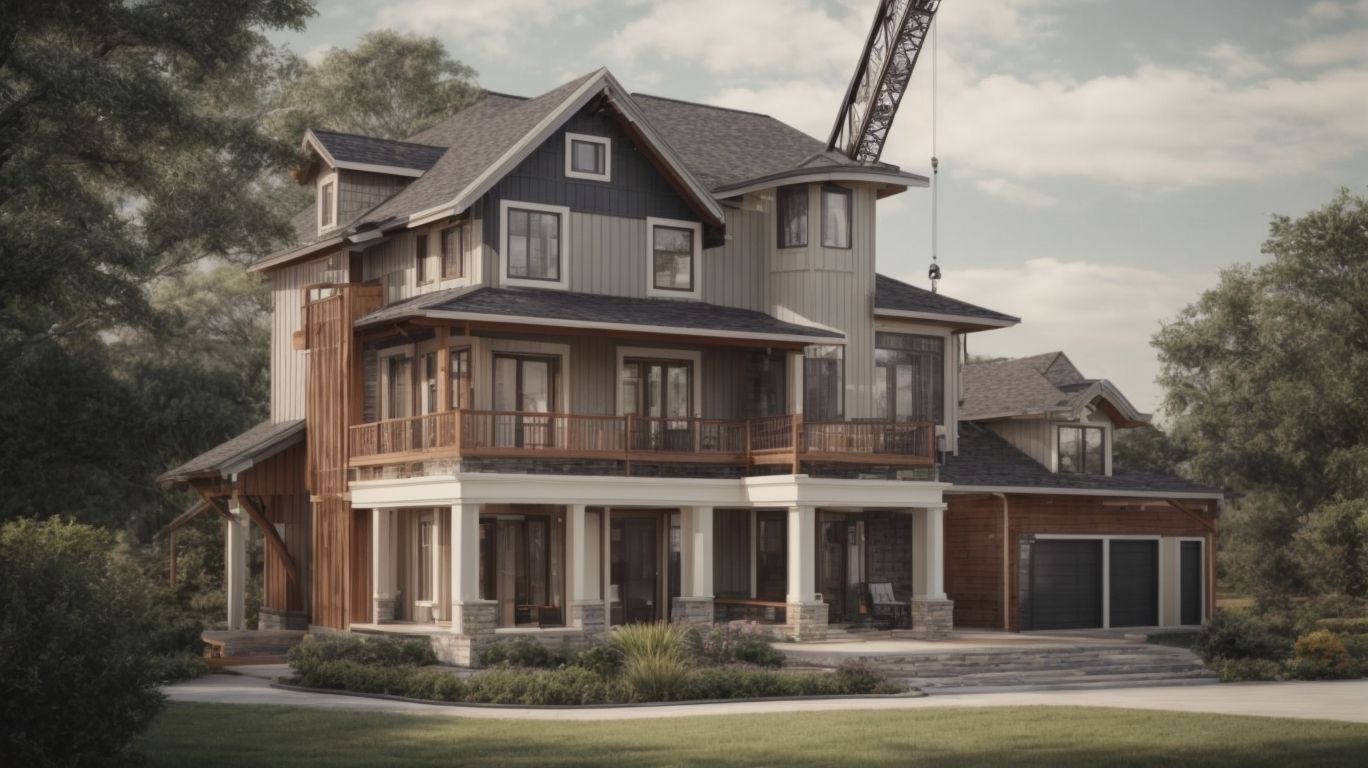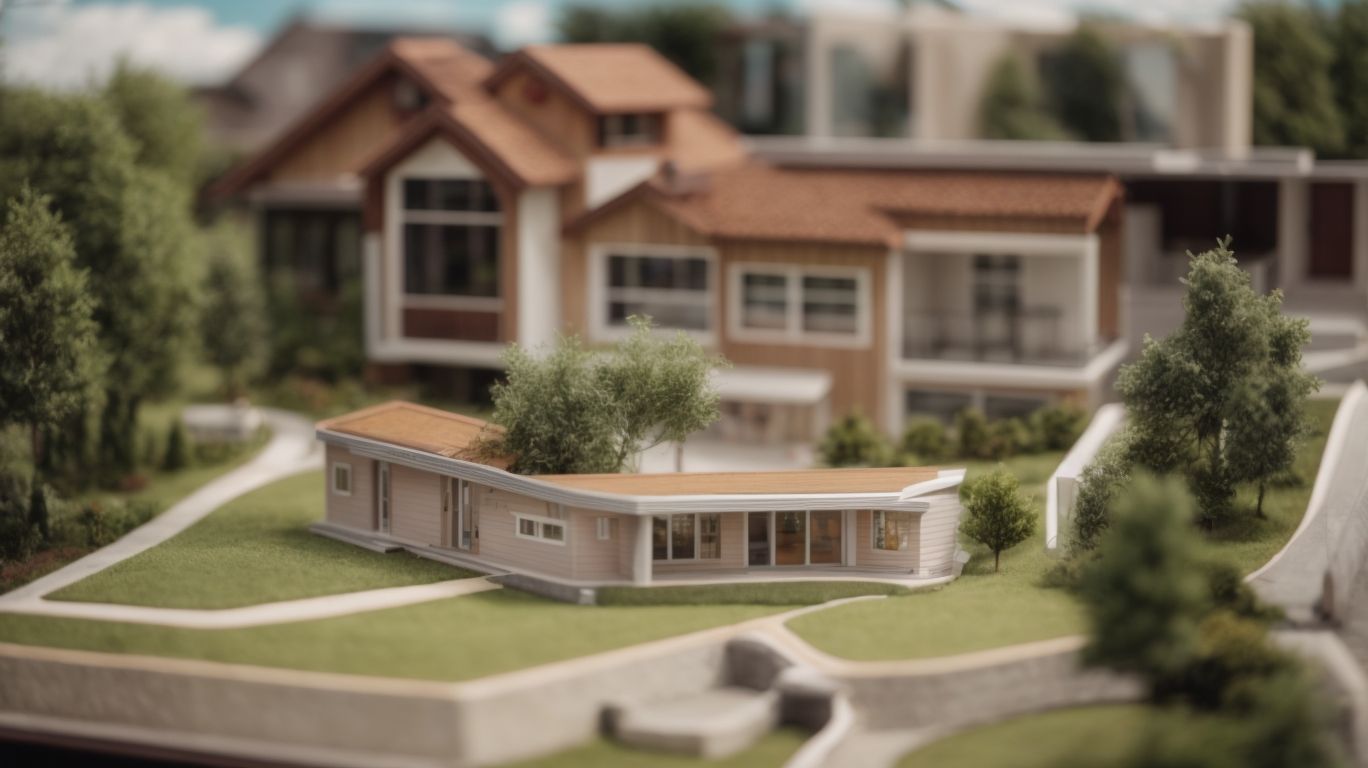
The Complete Budgeting Guide for Second Story Additions in the Bay Area
Considering adding a second story to your home in the Bay Area but unsure of where to start?
In this comprehensive guide, we will explore what second story additions are, the benefits they offer, factors to consider before starting the project, steps involved in the process, and the average cost of such additions in the Bay Area.
We will provide essential budgeting tips to help you plan and finance your second story addition project effectively. Let’s dive in!
What Are Second Story Additions?
Second story additions refer to the construction of new living space on top of an existing structure, providing homeowners with the opportunity to expand their property vertically.
These types of additions come with various benefits, such as increasing the square footage of a home without sacrificing yard space, which is ideal for properties with limited land area.
Second story additions can add value to a property by enhancing its overall aesthetics and functionality. Before embarking on such a project, homeowners should carefully consider factors like the structural integrity of the existing building, zoning regulations, and potential construction challenges.
Costs for second story additions can vary depending on factors like size, materials, and design complexity. The process typically involves obtaining permits, hiring contractors, designing the new space, and ensuring that the addition blends seamlessly with the existing structure.
What Are The Benefits of Second Story Additions?
Second story additions offer homeowners numerous benefits, including increased living space, enhanced property value, added privacy, customizations, and improved curb appeal.
Increase Living Space
One of the key benefits of second story additions is the significant increase in living space, allowing homeowners to accommodate growing families or create additional functional areas.
This extension not only provides more room for bedrooms or workspaces but also opens up possibilities for specialized areas such as a dedicated home office, entertainment zone, or even a cozy reading nook. The enhanced living space can lead to better organization and improved functionality within the home, offering residents the opportunity to customize their living environment to suit their unique lifestyle needs.
With careful design considerations, second-story additions can revolutionize the way a household utilizes space, enhancing overall comfort and convenience.
Increase Property Value
Second story additions can substantially raise the property value by enhancing square footage, modernizing the home, and aligning with current market trends, ultimately boosting the resale potential.
Buyers in today’s real estate market often seek homes that offer ample space and contemporary features, making second story additions a sought-after investment. By increasing the square footage through a second story addition, homeowners not only cater to modern preferences but also enhance the overall appeal and functionality of the property. This improvement can directly translate into a higher resale value, as buyers are willing to pay a premium for homes that have been upgraded to meet current market demands.
Avoid Relocation Costs
By opting for second story additions, homeowners can avoid the expenses and hassles associated with relocating to a larger property, offering a cost-effective solution for expanding living spaces.
This approach not only saves significant amounts of money on moving costs but also allows individuals to maintain their current budget and financial plans. With the rising property prices and associated relocation expenses, opting for a second story addition provides a financially savvy alternative that aligns with prudent financial planning. By investing in enhancing the existing property, homeowners can create additional living space without the hefty price tag of purchasing a new home or dealing with the uncertainties of the real estate market. Staying in the current home means avoiding additional expenditures that come with moving, such as real estate agent fees, closing costs, and potential renovation expenses in a new location.
What Are The Factors To Consider Before Adding a Second Story?
Before embarking on a second story addition project, homeowners should carefully consider various factors, including zoning regulations, structural integrity, construction costs, and the potential disruption to daily life.
Understanding the zoning regulations in your area is crucial to ensure that the proposed addition complies with local laws and building codes.
Structural assessments by qualified professionals can identify any potential issues that may arise during the construction process, helping to mitigate risks and ensure the safety of the new structure.
It is also essential to conduct a comprehensive cost estimation to establish a realistic budget for the project, taking into account materials, labor, permits, and potential contingencies.
Homeowners should assess how the construction process will impact their daily routines and plan accordingly to minimize disruptions to their lifestyle.
Zoning and Building Regulations
Zoning and building regulations play a crucial role in second story additions, as homeowners need to secure the necessary permits and ensure compliance with local building codes for a successful project.
Regulations surrounding second story additions vary by location, requiring homeowners to navigate the permit acquisition process efficiently. Obtaining the required permits involves submitting detailed plans for review, paying associated fees, and undergoing inspections to ensure adherence to safety standards. Compliance requirements may include specific setbacks, height restrictions, and structural integrity guidelines imposed by zoning laws.
Failure to comply with these regulations can result in fines or even halting the project altogether, highlighting the significance of understanding and adhering to legal considerations when embarking on second story additions.
Structural Integrity of Current Foundation
Assessing the structural integrity of the current foundation is essential before proceeding with a second-story addition, requiring thorough inspections to ensure compliance with building codes and safety standards.
It is crucial to understand that the foundation serves as the backbone of the entire structure, supporting the weight of additional levels and ensuring structural stability.
A detailed inspection not only identifies any existing issues but also allows for the evaluation of the foundation’s capacity to support the increased load.
By adhering to building code requirements and safety standards during this process, potential risks can be minimized, and the longevity of the project can be assured.
Foundation stability directly impacts the success of a second-story addition, making it imperative to prioritize structural assessments and implement necessary safety measures.
Cost of Construction
Understanding the cost of construction is a critical factor in second story additions, requiring accurate estimates, efficient budget management, and proactive financial planning to ensure the project’s financial viability.
Considering the budgeting strategies for second story additions is essential to keep expenses in check and prevent any financial surprises along the way. One effective way to manage costs is to allocate specific amounts to different aspects of the project, such as materials, labor, and permits. By breaking down the budget into these categories, homeowners can have a clearer picture of where the money is going and where potential savings can be made.
Researching cost estimation methods and consulting with experienced professionals can provide valuable insights into realistic budget projections. To further optimize the financial aspect of the project, implementing cost-saving tips like reusing existing structure elements, exploring alternative materials, and timing purchases strategically can help in maximizing the budget without compromising the quality of the second story addition.
Potential Disruption to Daily Life
Homeowners should anticipate potential disruptions to their daily routines during second-story additions, necessitating effective project management, clear communication, and homeowner responsibilities to mitigate inconveniences.
Coordination between various trades involved in the project is crucial to minimize delays and ensure smooth progress. Homeowners need to be actively involved in decision-making processes and promptly respond to queries from contractors to keep the project on track.
Meeting agreed-upon timelines and promptly addressing any issues that may arise play a significant role in avoiding extended disruptions to the household. By understanding and fulfilling their obligations in the construction process, homeowners can contribute to a more efficient and less disruptive second-story addition project.
What Are The Steps Involved in Second Story Addition?
The process of a second story addition typically includes several key steps such as design and planning, obtaining permits, demolition and preparation, and the actual construction phase.
- Once the initial design phase is completed, the next step involves acquiring the necessary permits from the local building authority. This process ensures that the project complies with all relevant building codes and regulations.
- With permits in hand, the focus shifts to site preparation, which may involve clearing the area, setting up access for materials and workers, and establishing safety measures.
- Coordination with the contractor is crucial during this phase to ensure proper scheduling and efficient execution of the construction work.
Design and Planning
The initial phase of a second story addition project involves meticulous design and planning, focusing on architectural design, layout considerations, and space utilization to meet the homeowner’s objectives.
Architectural design principles play a crucial role in ensuring that the second story seamlessly integrates with the existing structure while enhancing its overall aesthetic appeal. By carefully selecting materials, colors, and textures, the design can create a cohesive look that complements the rest of the house.
Layout optimization is another key aspect, where the positioning of rooms, windows, and doors is strategically planned to maximize natural light, airflow, and functionality. Customized features such as built-in storage solutions and innovative room layouts further enhance the usability and enjoyment of the new space.
Obtaining Permits
Securing the necessary permits is a crucial step in second story additions, requiring homeowners to navigate zoning regulations, ensure compliance, and obtain approvals before commencing construction.
When embarking on a second story addition project, homeowners must carefully review the local zoning regulations to determine the specific requirements for their property. Being in adherence to these regulations ensures that the new construction meets the city’s guidelines and does not disrupt the surrounding neighborhood.
The next step involves completing the permit application forms accurately and submitting them to the relevant authorities for review. Building permits play a vital role in legal compliance, as they signify that the construction plans have been scrutinized and approved by the appropriate governing bodies.
Demolition and Preparation
Before commencing the construction phase, proper demolition and site preparation are essential in second story additions, involving tasks such as foundation assessment, landscaping adjustments, and clearing the work area.
Ensuring the structural integrity of the existing foundation is crucial before adding a second story to a building. Foundation evaluations help determine if any modifications or reinforcements are needed to support the additional weight.
Considering landscaping adjustments during the site preparation phase can enhance the overall aesthetic appeal of the property.
Site clearance procedures play a significant role in creating a safe and organized work environment for the construction team, facilitating smoother progress during the subsequent building stages.
Construction
The construction phase of a second story addition project involves working with contractors, managing the project timeline, and ensuring compliance with building codes and quality standards throughout the building process.
- Contractor collaboration is essential during this phase, with clear communication and coordination between the construction manager and subcontractors.
- Project management best practices, such as regular progress meetings and detailed scheduling, help keep the project on track and within budget.
Adherence to building codes and safety protocols is paramount to ensure the structural integrity and occupant safety of the new second story. Quality assurance inspections are conducted at key milestones to verify that work meets the established standards, addressing any issues promptly to maintain construction quality.
What Is The Average Cost of Second Story Additions in the Bay Area?
In the Bay Area, the average cost of second story additions can vary significantly based on factors such as materials, labor, permits, and design complexity, necessitating a detailed cost breakdown and strategic cost-saving tips.
Factors like the square footage of the addition, architectural features, and the condition of the existing structure can greatly impact the overall project expenses.
The cost breakdown typically includes expenses for structural work, electrical and plumbing installations, insulation, finishings, and possible upgrades.
Clients often find savings by opting for standard materials rather than premium options, repurposing salvageable items, and consolidating labor schedules to minimize disruptions and save on labor costs.
Careful planning, realistic budgeting, and engaging with multiple contractors for competitive pricing are effective strategies to manage costs effectively in second story addition projects.
Cost of Materials
The cost of materials is a significant aspect of budgeting for second story additions, with considerations for material quality, sustainability, and eco-friendly choices influencing the overall project costs.
These factors play a crucial role in determining the long-term impact of the construction project on the environment. Builders are increasingly turning towards sustainable materials to reduce the carbon footprint of their projects.
When choosing materials for second story additions, opting for eco-friendly options such as reclaimed wood, recycled metal, or bamboo can not only lower costs but also promote environmentally responsible building practices. Incorporating energy-efficient materials like insulated glass windows or sustainable insulation can contribute to lower energy consumption and reduced utility bills in the long run.
Cost of Labor
Labor costs play a significant role in the overall budget of second story additions, with expenses related to contractors, subcontractors, and skilled labor impacting the project’s financial feasibility.
Contractor fees are a major component of labor costs in second story additions, as these professionals manage and oversee the construction process. Securing reliable contractors ensures that the project stays on track and within budget. Subcontractor agreements also contribute to labor expenses, covering specialized tasks like electrical work or plumbing. Effective labor management strategies, such as proper scheduling and coordination, are crucial in optimizing resources and minimizing downtime, helping to control costs and maintain efficiency throughout the project.
Additional Costs
Beyond material and labor expenses, homeowners should anticipate additional costs in second story additions, necessitating contingency planning to address unexpected expenses and prevent budget overruns.
One key aspect of effective cost management in second story additions is the identification of potential cost overruns early in the project. By conducting thorough risk assessments and creating a detailed budget that accounts for potential fluctuations, homeowners can better prepare for unexpected expenses.
Implementing cost-effective solutions, such as value engineering and regular communication with contractors to monitor progress and expenses, can help mitigate the risk of budget overruns.
Proactive budget management approaches, like setting aside a buffer for unforeseen costs and regularly reviewing the budget against actual expenses, are essential for successful cost management in second story additions.
How To Budget For Second Story Additions?
Creating a comprehensive budget for second story additions involves obtaining accurate estimates, exploring financing options, and implementing effective project management strategies to ensure financial planning aligns with the project’s scope and goals.
Accurate cost estimation techniques play a crucial role in the budgeting process, as they provide a realistic outlook on the expenses involved in the second story addition project. Utilizing detailed itemized lists and obtaining multiple quotes from contractors can help in arriving at more precise budget figures.
When it comes to financing alternatives, homeowners can consider options such as home equity loans, personal loans, or refinancing their mortgage to fund the project. Managing the budget effectively entails tracking expenses, monitoring cash flow, and making adjustments as needed to stay within the allocated budget for the second story addition.
Create a Detailed Plan
Developing a detailed plan is essential for budgeting in second story additions, involving considerations for project timeline, layout optimization, and prioritization of key features to align expenses with homeowner requirements.
Efficient project coordination plays a crucial role in budget optimization when undertaking second story additions. By carefully managing the timeline, homeowners can avoid cost escalations and ensure timely completion. Focusing on designing layouts that maximize space utilization and flow can lead to cost savings in construction and materials. Prioritizing key features based on functionality and aesthetics can help homeowners make informed decisions about where to invest their budget for the best overall outcome.
Get Multiple Quotes
Obtaining multiple quotes from contractors is a prudent budgeting strategy for second story additions, allowing homeowners to compare costs, evaluate service offerings, and leverage competitive pricing for cost-effective solutions.
By seeking multiple quotes, homeowners can not only assess the cost implications but also gain insights into the quality of materials, workmanship, and overall project scope. The process of gathering estimates from different contractors fosters a comprehensive understanding of the market rates and available services. It provides an opportunity for homeowners to negotiate favorable terms, such as flexible payment schedules or potential discounts. Choosing the right contractor through thorough price comparisons and evaluating the quotes can lead to a successful project outcome within the planned budget.
Leave Room for Unexpected Costs
Allocating a buffer for unexpected costs is a vital aspect of budgeting for second story additions, enabling homeowners to address unforeseen expenses, manage cost overruns, and maintain financial stability throughout the project.
- By incorporating strategies for cost containment, such as obtaining multiple quotes from contractors and suppliers or opting for standard materials instead of premium options, homeowners can proactively control expenses.
- Establishing a contingency plan that sets aside a portion of the budget specifically for unforeseen circumstances can provide a safety net in case unexpected costs arise.
- Implementing risk mitigation techniques, such as conducting thorough inspections before the project starts to uncover potential issues, can help prevent costly surprises later on.
This focus on financial resilience and budget flexibility not only safeguards against financial strain but also ensures a smoother and more successful second story addition.
Prioritize Must-Have Features
Prioritizing must-have features is crucial for effective budgeting in second story additions, ensuring that essential elements related to home functionality, comfort, and aesthetics receive adequate financial allocation.
This approach not only ensures that the key aspects of the project are carefully considered but also helps balance between functional requirements, design preferences, and lifestyle considerations. By focusing on essential features such as structural integrity, sufficient natural light, adequate storage space, and energy-efficient systems, homeowners can create a space that not only meets their immediate needs but also enhances their overall quality of life.
Integrating these key elements into the budget early on can prevent overspending on less critical aspects and ensure that the investment aligns with the homeowner’s vision and requirements.
Consider Financing Options
Exploring various financing options is essential for homeowners planning second story additions, involving considerations for construction loans, refinancing strategies, and loan products tailored to project requirements.
One popular financing avenue for homeowners considering second story additions is a home equity loan. This type of loan allows individuals to borrow against the equity in their home, providing a lump sum of money that can be used for the project.
A home equity line of credit (HELOC) is another option that offers flexibility in accessing funds as needed.
Refinancing an existing mortgage to take advantage of lower interest rates or tapping into a cash-out refinance can also provide the necessary funds for home improvements.
It’s crucial for homeowners to evaluate different loan types and calculate the overall costs and benefits before selecting the most suitable financing option.




No Comments